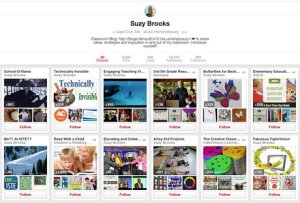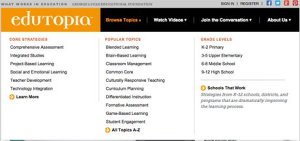5 Ideas to Kickstart Your Summer Learning
This summer, build a learning archive, read for inspiration, design your digital space, redesign your physical classroom space, and take on a challenge.
Your content has been saved!
Go to My Saved Content.To keep our students sharp over the summer, we often assign subject-specific reading, math drills, and projects. However, as educators, we also need to hone our own skills, develop new ideas, and reflect on our practice. Here are five ways to kickstart your summer learning.
1. Construct Your Learning Archive
When planning curriculum or attending professional development, we collect resources -- both physical and digital. However, we need an efficient way to organize what we find valuable. In the past, this has resulted in the accumulation of binders or folders, but now we also have files scattered across devices.
Take time this summer to create a learning archive. A great digital system supports the individual learner and can be saved, searched, or shared. Whether you choose Evernote, OneNote, or Google Drive, think about how you can start organizing all of your learning and making it accessible from any device and at any time. If you prefer handwritten notes on paper, make sure to pick a tool that allows you to easily take pictures of those notes, add them to your archive, and search them later.
In addition to collecting notes, think about how you might archive online resources. You could add links and notes to a Google Doc or an Evernote note, or build a shareable library using Diigo or Pinterest. While I love maintaining my Diigo Library, both Lisa Johnson and Suzy Brooks have hundreds of pins visually displayed on dozens of Pinterest boards.

Not only is summer a great time to get organized for the coming school year, but it's also a fantastic time to explore.
2. Read for Inspiration
Though many schools assign summer reading books to their faculties, I would recommend adding one of these titles to your list:
- The App Generation by Howard Gardner & Katie Davis
- Why School? by Will Richardson
- It's Complicated by danah boyd
- Show Your Work by Austin Kleon
- Too Big to Know by David Weinberger
While some of these are specific to education, others offer different perspectives on students, media, and economic trends. You might even want to create your own book club with colleagues, either in person or online. At Trinity School in Atlanta, teachers use a group hashtag (#trinitylearns) to share their reading reflections. This allows them to make deeper connections and collaborate throughout the summer.
Now that you have an archiving system, another option could be reading blog posts from other educators. If you need a starting point, check out CM RubinWorld's Global Top 12 Teacher Blogs. These incredible educators write regularly on a range of topics. For 2015, as part of a global blogger series, they will even respond monthly to a big-picture question related to 21st-century education.
You could also begin by picking a strategy, topic, or grade level here on the Edutopia site. (Just click the "Browse Topics" tab at the top of this page.)

Imagine the potential if you set a goal to read at least one article each week. Not only could you find new ideas, but you could also test out digital reading strategies such as using the Evernote Web Clipper or Diigo annotation tools.
3. Design Your Digital Space
If you already have or want to set up a class website or blog, an email newsletter for parents, or a learning management system (e.g. Google Classroom, Edmodo, Moodle, etc.), take time over the summer to design and test your digital space.
In the business world, if a company wanted to build a new website, they would design, test, and iterate before launching to the public. Take the summer to prototype new digital possibilities. Leverage former students and parents as beta testers. Ask colleagues if they can easily find your resources, assignments, and news. See how your digital space displays in different browsers as well as on various devices, and really maximize the potential to extend your classroom through your online environment.
4. Redesign Your Physical Space
Your current students have become comfortable in your classroom, office, or lab. They understand your expectations and routine. Fast-forward to fall. What do you want your students to think when they enter your space? Is this a class where they'll engage in group work and discussion? Do they have choice in how they demonstrate their learning? What do you have on the walls? Where is your desk? All of these considerations help set the tone for your students.
Consider the potential for a summer redesign. Desks, walls, and cabinet doors could be transformed into writeable spaces with a coat of Clear Idea Paint. Chairs and desks could be reconfigured to create a more agile learning environment. For inspiration, check out some of these examples on Classroom Cribs -- and don't forget to save your ideas to your archive!
5. Take On a Challenge
When on vacation, we are often more willing to try new things. Last year, Lisa Johnson recommended 9 Power-Packed Tools to highlight your summer memories. This summer, consider making a new creation or even taking on a larger existing challenge. If you choose the latter, here are a few to consider:
- New to social media? Take on Carl Hooker’s 21-Day #TwitterGuide4Beginners Challenge.
- Use The Classroom Cribs Challenge to overhaul your physical space.
- Create your own version of the 30-Day Blogging Challenge.
- Test your iPad prowess with Craig Badura's App Task Challenges.
Dan Callahan, a professional learning specialist, once commented that "the most innovative teachers are the ones who aren't afraid to play." Whether you tackle one or all of these ideas, the most important task may be to just let yourself play. Experiment with whatever tools, apps, devices, and books you may be able to use with your students next year. You never know where it might take you.
